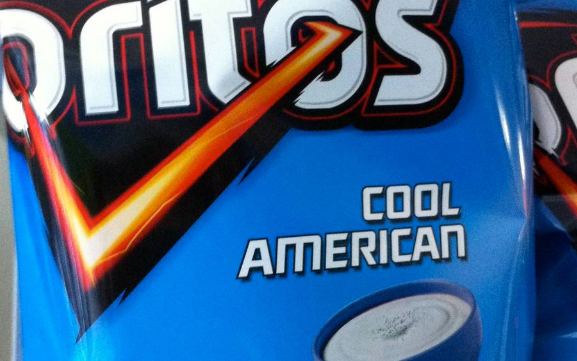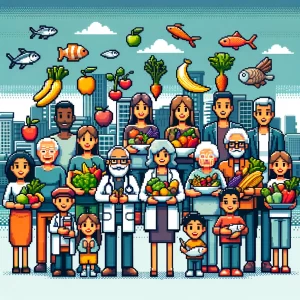
Each Step Toward Assimilation = 3% More Junk Food
When 30-year-old Carla moved from Peru to New Jersey, she brought more than her suitcase. She brought her recipes: quinoa soups, fresh ceviche, and grilled plantains. But by her fifth year in the U.S., those recipes had faded behind boxed pasta, frozen meals, and fast food combo deals. “It was faster, cheaper—and it just felt more American,” she admits.
Carla’s story is more than anecdotal. It reflects a powerful public health trend: as immigrants spend more time in the U.S., their diets change—and not for the better.
A new study published in Frontiers in Public Health offers one of the clearest pictures yet of how acculturation—the process of adapting to a new culture—drives up ultra-processed food (UPF) consumption among non-U.S.-born adults. And the findings are sounding alarms for nutritionists, physicians, and public health professionals.
Acculturation and the Standard American Diet
The U.S. is home to nearly 45 million immigrants. That’s over 13% of the population. And while immigrants bring rich culinary traditions, many eventually adopt elements of the Standard American Diet (SAD)—a pattern dominated by convenience foods: think sugary cereals, fast food, soda, frozen meals, and processed meats.
This isn’t just about taste or convenience. It’s about what surrounds people. As the study notes, “immigrants are introduced to new dietary options and habits that may not be common in their countries of origin.” But those “new” options are often calorie-dense, nutrient-poor, and linked to everything from obesity to cancer.
What the Study Found: A Clear, Climbing Trend
Using data from over 3,600 foreign-born adults in the U.S. gathered through the NHANES survey (2011–2018), the researchers developed an Acculturation Index (AcI). It factored in language spoken at home and the proportion of life spent in the U.S.
Here’s the stark takeaway:
For every 1-point increase in acculturation, UPF consumption rose by 3% of total daily calories.
That’s not a subtle shift. It’s a clear, linear trend: the more “Americanized” someone becomes, the more they’re eating industrially processed food—high in salt, sugar, oils, and artificial additives.
The average UPF intake in this group? Over 43% of total energy.
And while some ethnic groups showed different baseline levels of UPF consumption (e.g., Non-Hispanic Asians consumed the least), the pattern held steady across race and ethnicity: more acculturation = more UPFs.
Why This Matters: More Than Just Calories
Ultra-processed foods aren’t just unhealthy—they’re dangerous. Studies consistently link high UPF intake to:
- Obesity
- Type 2 diabetes
- Cardiovascular disease
- Cancer
- All-cause mortality
The researchers also point to microbiome disruption. One study cited found that immigrants from Southeast Asia quickly developed a more “Westernized” gut microbiome after moving to the U.S.—a shift strongly tied to diet.
In short, as traditional meals disappear, so does microbial diversity. The cost? Metabolic health.
Beyond Individual Choice: The Role of Systems and Environment
It’s tempting to frame this as a matter of personal responsibility: “Just eat better.” But that misses the broader picture.
Ultra-processed foods are:
- Cheaper than fresh produce
- Heavily marketed, especially in low-income neighborhoods
- Ubiquitous in schools, convenience stores, and fast food chains
For many immigrants—especially those navigating new jobs, long commutes, and limited access to culturally familiar foods—UPFs aren’t a choice. They’re a default.
That’s why this study doesn’t just highlight a problem—it points to systems that need change.
What Can Be Done?
The authors suggest a two-pronged approach:
1. Preserve Cultural Foodways:
Traditional diets from many immigrant communities—rich in vegetables, legumes, whole grains, and lean proteins—are often healthier than the SAD. Supporting these practices means creating spaces where cultural foods are accessible, affordable, and respected.
2. Targeted, Culturally Competent Interventions:
Nutrition programs shouldn’t force assimilation. They should build on the strengths of immigrant diets, offering guidance that’s relevant, inclusive, and feasible within people’s everyday lives.
Some possible solutions include:
- Community cooking classes that fuse traditional recipes with accessible U.S. ingredients
- Nutrition labeling that includes processing levels
- Urban planning that combats food deserts and promotes farmers markets
- School and workplace programs that embrace food diversity
What’s Next?
While this study is powerful, it’s just a start. Future research could explore:
- How different waves of acculturation affect second-generation children
- The role of social media and advertising in shaping immigrant food preferences
- Longitudinal studies tracking health outcomes over time
And perhaps most importantly: how public health systems can act now to protect communities from the creeping effects of ultra-processed diets.
Join the Conversation
How do we honor and preserve traditional diets in a fast-paced, convenience-driven culture? What role can public health professionals play in shifting the food landscape for immigrant communities?
Are we designing our food systems to welcome new Americans—or to assimilate their palates into a public health crisis?
Let us know:
- How would this research apply in your community?
- Do these findings align with what you’ve observed?
Don’t Let Science Pass You By
⚠️ Public health breakthroughs and threats are happening fast.
Missing one update could mean missing the chance to act, advocate, or lead. Stay sharp, stay informed—with our weekly science brief, trusted by changemakers.✅ Subscribe now—it’s free and essential.
📣 Share this blog to grow the circle of informed action.



